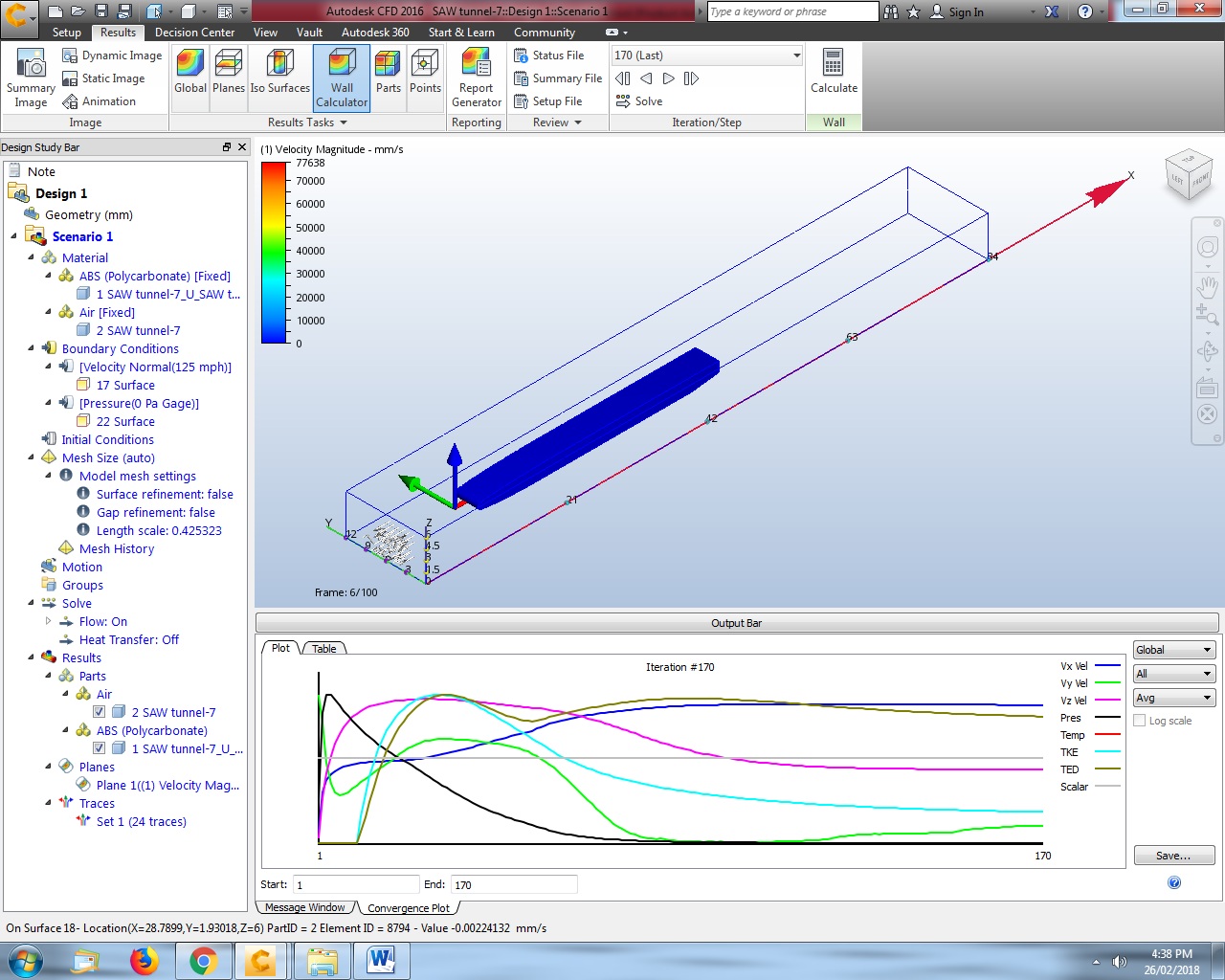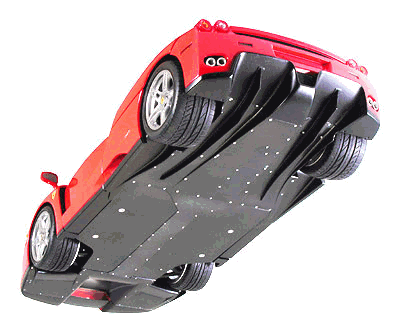- Joined
- Jul 24, 2002
- Messages
- 7,124
Finally got back to this, was a steep learning curve but I'm starting to get some usable data.
I've been running a flat bottom SAW boat for years and was wondering if rocker would create down force and if so what angles and how much. Trying to keep big pitch hooked up and moving weight back on the new boat but was hoping to take advantage of the aero as well. Air at 100+ mph has got to be doing something!
I modeled the tub in CAD and ran the simulation at 125 mph. Then added a straight 7 degree rocker/diffuser and re-ran it. The simulation shows a fairly big (relative) increase in down force. Guys using the s/w say to not worry about the numbers per se, just the differences. The flat boat showed 276 and the curved bottom 3883 units of down force.
Next I'll try 4 & 10 degrees.


Length is the X direction and +ive FX is drag. Y is side to side and Z is up and down, -ive Z is downforce:
Summary (Flat bottom)
-------------------
Total area, 397.708, mm^2
TOTAL FX, 23903.1, micro-Newton
TOTAL FY, -817.013, micro-Newton
TOTAL FZ, -276.329, micro-Newton
Center of Force about X-Axis (Y-Z), -4.70255, 1.60052, mm
Center of Force about Y-Axis (X-Z), 304.295, 1.73733, mm
Center of Force about Z-Axis (X-Y), 33.1146, -1.75049, mm
Summary (7 deg. rocker)
-------------------
Total area, 394.029, mm^2
TOTAL FX, 25334.1, micro-Newton
TOTAL FY, -389.061, micro-Newton
TOTAL FZ, -3883.42, micro-Newton
Center of Force about X-Axis (Y-Z), -1.73195, 1.69422, mm
Center of Force about Y-Axis (X-Z), 53.0675, 1.78069, mm
Center of Force about Z-Axis (X-Y), 25.8385, -1.719, mm
I've been running a flat bottom SAW boat for years and was wondering if rocker would create down force and if so what angles and how much. Trying to keep big pitch hooked up and moving weight back on the new boat but was hoping to take advantage of the aero as well. Air at 100+ mph has got to be doing something!
I modeled the tub in CAD and ran the simulation at 125 mph. Then added a straight 7 degree rocker/diffuser and re-ran it. The simulation shows a fairly big (relative) increase in down force. Guys using the s/w say to not worry about the numbers per se, just the differences. The flat boat showed 276 and the curved bottom 3883 units of down force.
Next I'll try 4 & 10 degrees.

Length is the X direction and +ive FX is drag. Y is side to side and Z is up and down, -ive Z is downforce:
Summary (Flat bottom)
-------------------
Total area, 397.708, mm^2
TOTAL FX, 23903.1, micro-Newton
TOTAL FY, -817.013, micro-Newton
TOTAL FZ, -276.329, micro-Newton
Center of Force about X-Axis (Y-Z), -4.70255, 1.60052, mm
Center of Force about Y-Axis (X-Z), 304.295, 1.73733, mm
Center of Force about Z-Axis (X-Y), 33.1146, -1.75049, mm
Summary (7 deg. rocker)
-------------------
Total area, 394.029, mm^2
TOTAL FX, 25334.1, micro-Newton
TOTAL FY, -389.061, micro-Newton
TOTAL FZ, -3883.42, micro-Newton
Center of Force about X-Axis (Y-Z), -1.73195, 1.69422, mm
Center of Force about Y-Axis (X-Z), 53.0675, 1.78069, mm
Center of Force about Z-Axis (X-Y), 25.8385, -1.719, mm
Last edited by a moderator:




